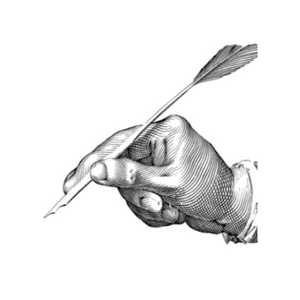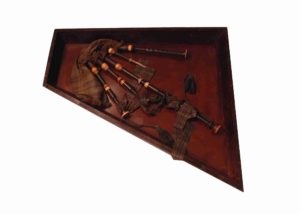Major-General David Stewart of Garth
Just before heading up the stairs to Gallery 4 visitors will see the painting of someone who, on first glance, might not look like a
Home » Blog » Black Watch History » St. Valery


The 12th June marks the 80th anniversary of St. Valery. It is a point in World War 2 that is often overshadowed by the heroic return of hundreds of thousands of soldiers from Dunkirk. Among the men on those beaches that were strafed by Nazi planes, shelled by artillery and desperately trying to get home were soldiers of the 6th Battalion. Those lucky enough to be rescued by the flotilla that crossed the Channel were successfully ferried back to England.
Just as heroic is the story of the 51st Highland Division that included the 1st and 4th Battalions. Led by Major General Victor Fortune, a Black Watch officer, they were fighting further south, having been placed under French command. When the Germans broke through the

French lines the Division was soon cut off from retreating to Dunkirk. Some, including the 4th Battalion, was evacuated at Le Havre; the remainder were cut off around the small port of St Valery-en-Caux. On the 11th June the British Navy, which had already tried one unsuccessful rescue, were forced to pull back from the coast. Despite bravely fending off German attacks the Division eventually ran out of time. They were exhausted, running low on ammunition and surrounded. Major General Fortune was left with no choice but to surrender on the 12th June.
Almost 11,000 soldiers from the 51st Highland Division, including 800 from The Black Watch, were taken prisoner and marched across Europe. Some escaped en route going to extraordinary lengths to make it back to Britain. Captain Bradford escaped on the march and eventually headed to North Africa from Marseille as a stowaway. Held in Algiers he escaped in a fishing boat to Gibraltar. It would be July 1941 before he made it back to Britain – there he would re-join the new 51st Highland Division and head to North Africa. Despite the success of his escape on the march many others never made it as far as the camps. For those held as prisoners of war in the Nazi camps the fighting was now over. Some were sent to do hard labour in the mines, effectively becoming forced labour used to support the Nazi war effort. It would be almost five years before they were released.
In 1944 as part of the invasion of France, Field Marshall Montgomery made a point of sending soldiers from the 51st Division back to liberate St Valery. For the Division and The Black Watch the surrender at St Valery continues to be an important point of remembrance and an example of the bravery and fortitude of those that served in World War 2.
Just before heading up the stairs to Gallery 4 visitors will see the painting of someone who, on first glance, might not look like a

Rosie Waine is the William Grant Foundation Research Fellow at the National Museum of Scotland. Here she writes how the Black Watch Museum & Castle
The Black Watch Museum archive holds a considerable quantity of primary source material relating to the Battle of Loos, 24th September 1915. This event has
Subscribe to Our Newsletter
© The Black Watch Castle and Museum
The Black Watch Regimental Trust is a charitable company registered in Scotland | Charity No: SC005848

14 thoughts on “St. Valery”
My Grandad was captured at St Valery, we have a photo that was sent to my Gran of them when they were POW’s. I believe it was the only communication they had until the end of the war & he came home.
Thank you for sharing his story Robyn.
I found out at the weekend that my grandad was at st Valery in the black watch and escaped with another soldier before the Germans arrived and somehow made it back to Felixstowe via a coal boat before going to a holiday camp in Clacton and rejoining the army
Really interesting story and the first I had heard it when my aunty told me
My uncle was captured too at St Valery. He came home and I have his Xmas cards which he sent home to my aunt from the prisoner of war camps.
Thank you for sharing his story with us June.
Is it known who is who in this photo?
Hello, unfortunately we do not know the names of the soldiers in this picture.
My father was captured at St Valery.Last year we took his medals to the wonderful Black Watch museum in Perth.There for ever.
Hello Philip,
Thank you for trusting us to care for your Father’s medals and sharing his story.
My uncle George ‘Eddie’ Joseph Escott was captured at St. Valery (1st Battalion) and was sent to Stalag VI-G near Bonn and later to Stalg 4C in Czechoslovakia.
He spent the whole of the war as a POW.
He served in the Korean War in the early 1950’s and apparently distinguished himself.
At his funeral in Queensland Australia in 1992 the South Korean Embassy requested to attend and asked for the honour of taking the Union Jack from his coffin to a museum in S. Korea as a mark of respect to him.
I have no details of his actions in Korea, so if anyone can help please post me.
Hello Paul, you could submit a research request to our archive team who may be able to assist in discovering his actions in Korea. You can submit here – https://theblackwatch.co.uk/research/
My father John Charles Mertens was an officer in the BlackWatch regiment. He was captured at Saint-Valerie-En-Caux. I believe he spoke some german so was able to assist his commanding officer (Fortune) negotiate with their german counterparts. I believe my father is the officer wearing glasses and a helmet and standing next to a German officer and a British officer who I suspect is Fortune. He once told me that he was injured prior to the surrender. Dad did mention the march into POW camps and later surgery. He also mentioned several escape efforts. One dressed as a woman. Dad did return to Germany after the war for work as an Engineer. He married my mother (British) in Germany and my sister was born in Germany. I was born in the UK and we came to Australia in 1950. I have a photo of dad taken on the 23rd of October 1943 with a reference to Kriegsgefang and the number 326. Dad did mention being in a Polish POW camp/castle/prison with Airey Kneave. Regrettably I no longer have dad’s kilt and kit but I do have a copy of THE QUILL, which is a published and bound limited edition collection of poems, cartoons and short stories written or drawn mainly by British POW’s.
Thank you for the opportunity to remind us all of what these guys endured.
Mike Mertens. Sydney Australia
My father was captured at St valare he was a regular 51st devision Black watch Sargent Henry Boyle . I been told he escaped 3 times fro Stalage 8bLambdorf idont know if I was given all the information would like to know more I have apicture
He was also away for 7 months and my mother got a telegram saying missing presumed dead but he was captured yet once again I would appreciate any more information asto my father’s actives during his prisoner of war actives thank you .
Hi Veronica,
Thank you for sharing information about your father. To assist you in obtaining information about your father, we recommend reaching out to our research department. Please feel free to email them at research@theblackwatch.co.uk with any details or inquiries you may have regarding your father’s service. They will do their best to provide you with the information you are seeking.
Once again, thank you for reaching out and sharing your family’s connection to The Black Watch. We hope you find the information you are looking for.